#
Release 24.06 🚀

We're happy to announce that we’ve just deployed a new stable release of the Relu® Hosted Engine: 24.06! This version contains many improvements compared to the current stable version v2; read along to learn more.
This version also contains some (small) breaking changes, so it will require a few modifications on your end to integrate, though they should be very simple; we believe that switching to this new version should be a matter of a few weeks. You will have 6 months to switch from v2 to 24.06, after which we will automatically redirect all calls from v2 to 24.06, but we will of course work together with you to ensure that this doesn’t cause any disruptions.
TDLR
- Version
24.06contains improvements to: fused teeth (more realistic, better interproximal, speedup), CBCT dentition segmentation (speedup, handling of crowding, etc.), IOS dentition segmentation (speedup, accuracy).- As well as new outputs: IOS crown landmarks (mesial-distal points, long axis), IOS base adding, IOS orientation (allowing to automatically orient the IOS facing the user), and other new options and improvements.
- The breaking changes are the removal of the options
decimationFactor,smoothingFactorandmakeManifoldand of the routes/implant-job,/cmf-job,/orthodontics-job, and/segmentation-job.- We will make stable deployments of the Engine every 3 months (if sufficient relevant improvements), and will end support for a certain stable version 6 months after the next stable version is released.
#
New features & Improvements
You can find a detailed comparison of the previous and new stable deployments in our changelog. I’ll summarise the most important ones here. All these new functionalities are also available on the Relu® Creator; so feel free to test them there as well. If you are interested in using some of the new outputs, reach out to us such that we can discuss pricing details and give you access.
You can also find speed benchmarks of v2 and 24.06 in our changelog.
#
More realistic and robust fused teeth
The improvements to the fused teeth include: a smoother transition between the IOS crown and CBCT root, better closing of the crown in the interproximal region, and overall robustness and speed improvements.
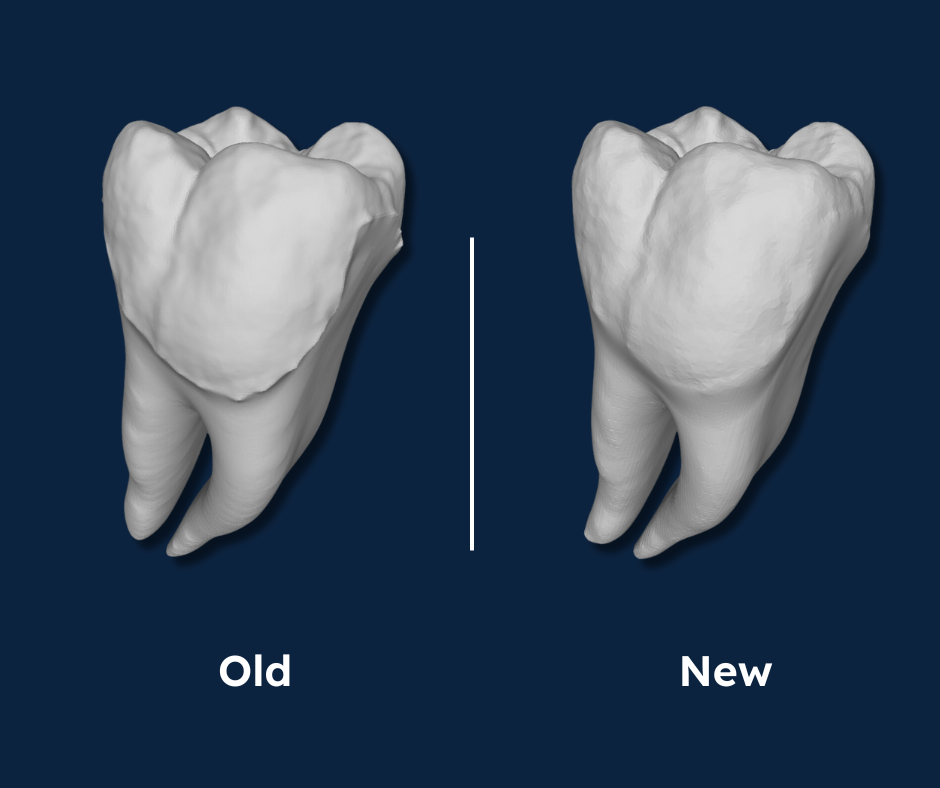
#
Better & faster handling of complex cases for CBCT teeth segmentation
Faster (~1.7x speedup), better separation of teeth in crowding scenarios, better classification and detection of teeth, overall robustness and accuracy improvements.
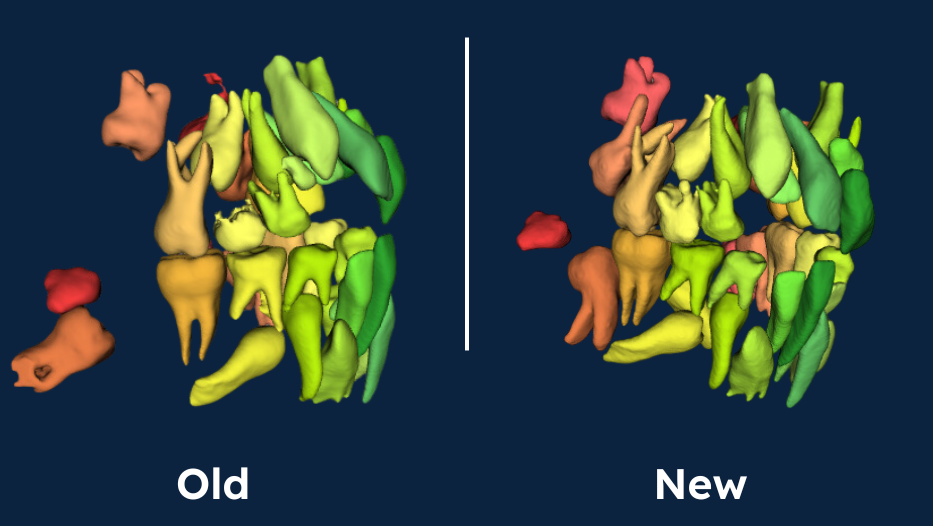
#
Higher accuracy IOS teeth segmentation
Faster (~1.6x speedup), accuracy and robustness improvements (less under-segmentation, better outlining of the tooth border, etc.).
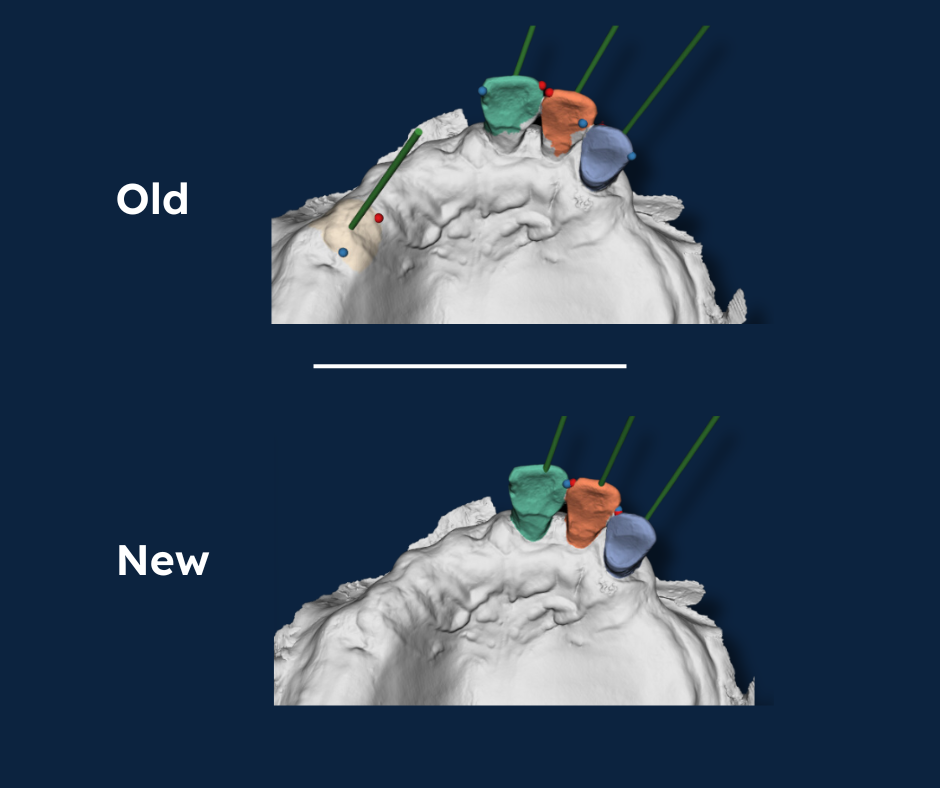
#
New functionality: detecting mesial-distal points and long axis of IOS teeth
You can now request the automatic detection of relevant landmarks on the IOS crown; tooth long axis, mesial, distal, and origin points, thus automating your orthodontic workflows (see docs).
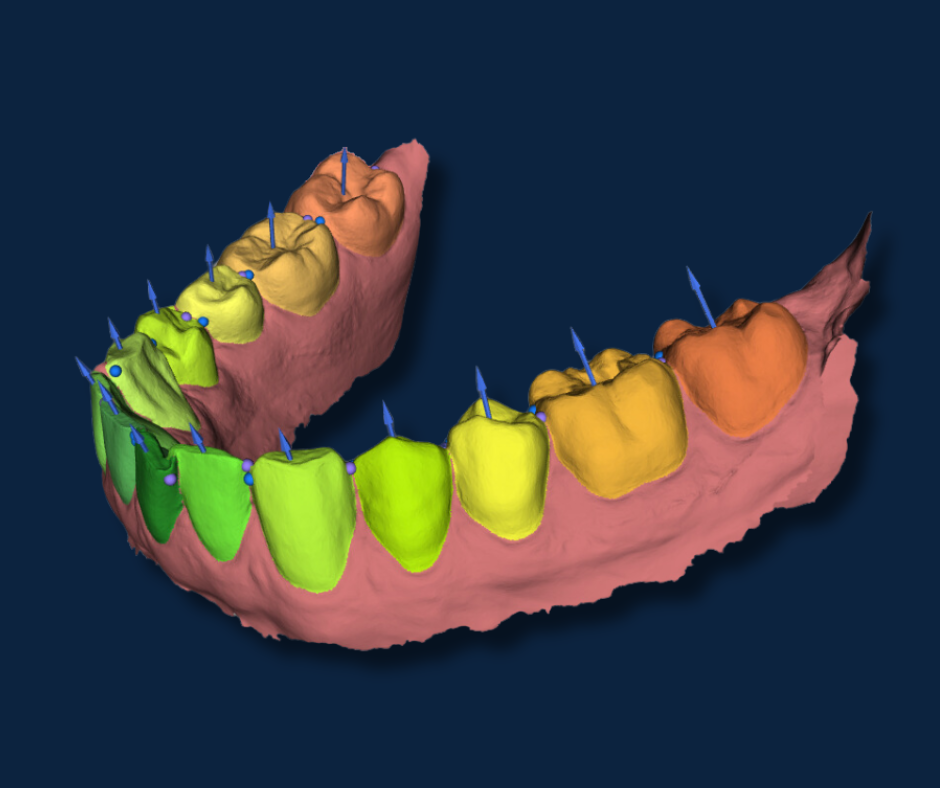
#
New functionality: IOS base adding
You can now automatically add a base to the raw IOS, see docs for more information.
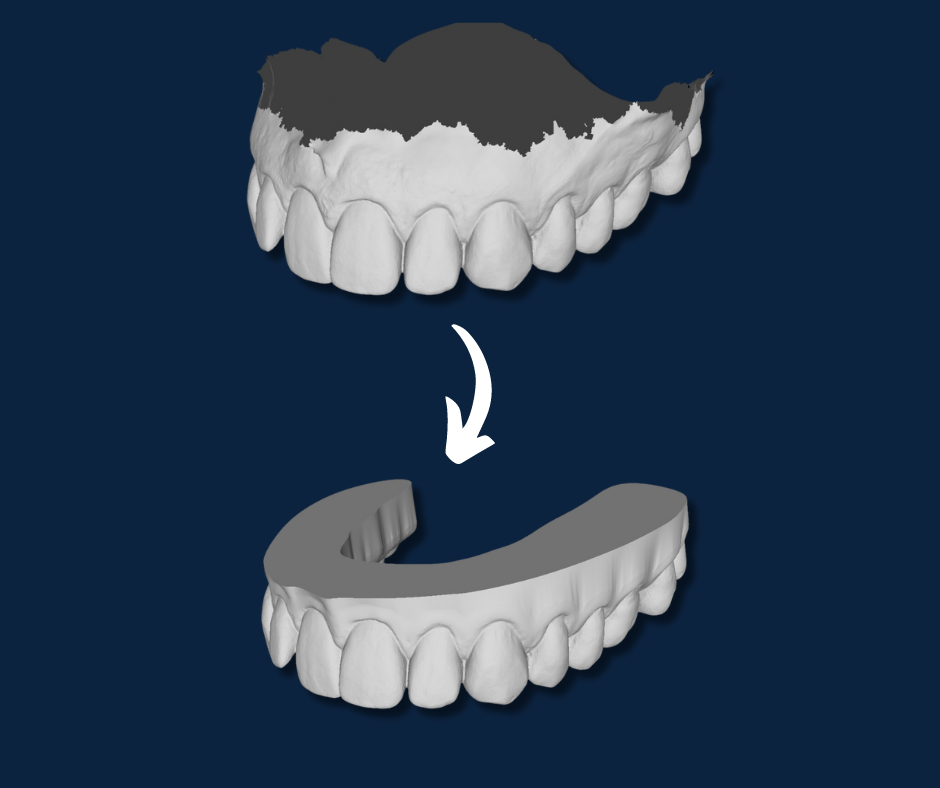
#
Faster & more robust closed crowns
A closed crown is a watertight / closed mesh representing the segmentation of a crown in the intra-oral scan. In this release, we've made them almost 10x faster to generate, they now have a smoother transition, and are more robust.
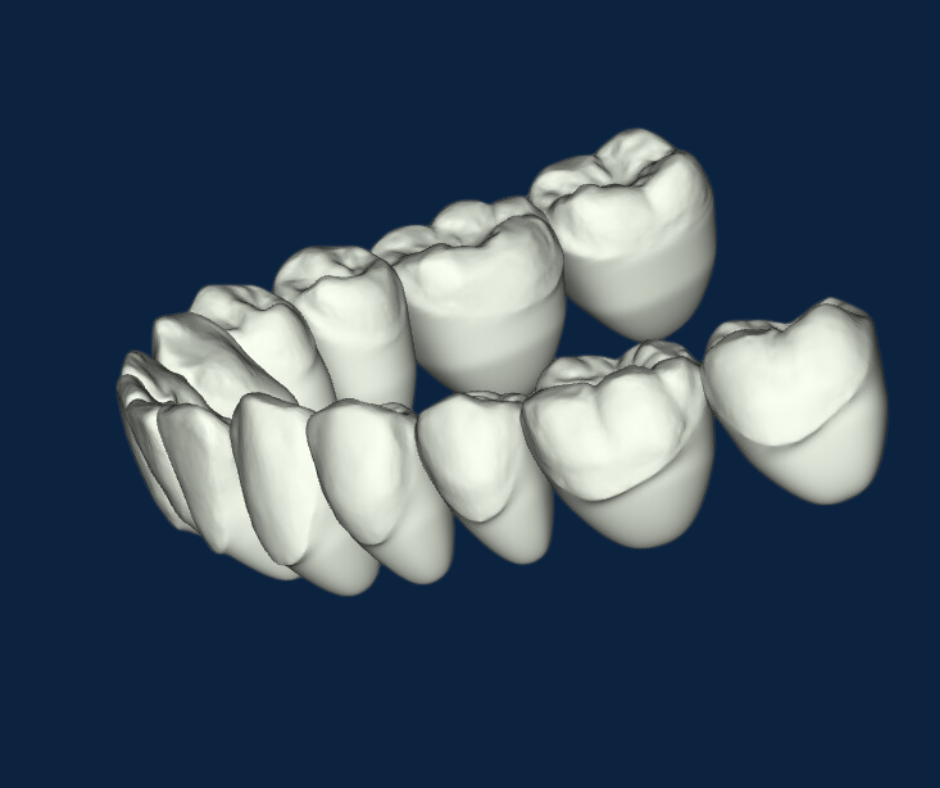
#
New option: gingiva mesh base and/or profile closing
You now have more options to control the gingiva mesh: you can add a base and/or smoothly close the teeth profiles (i.e., the holes in the gingiva mesh that are caused by removing the crown segmentations). You can find more information on how to use these options in our docs.
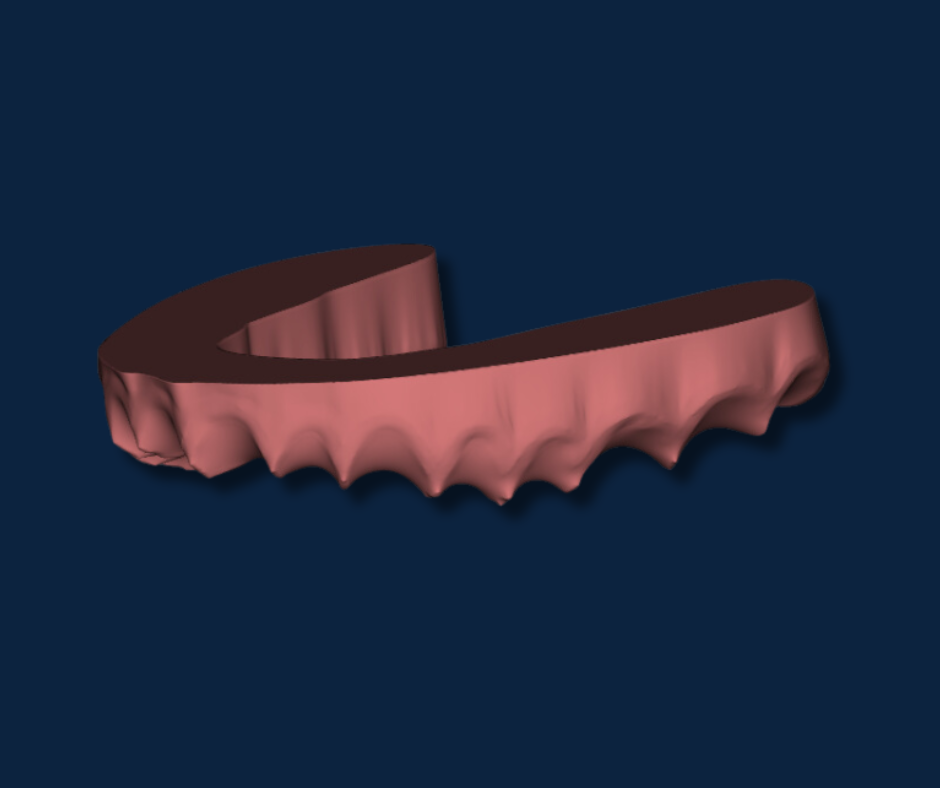
#
New functionality: automatic correction of the IOS orientation
Different intra-oral scan manufacturers can have different conventions for the orientation of the scan; as a result scans are sometimes not loaded facing the user, which requires him to manually rotate the scan, thus slowing down his workflow. We have built an AI that automatically detects the orientation of the intra-oral scan, allowing you to automatically orient it correctly, and saving the user's precious time. Read more on how to use this functionality in our docs.
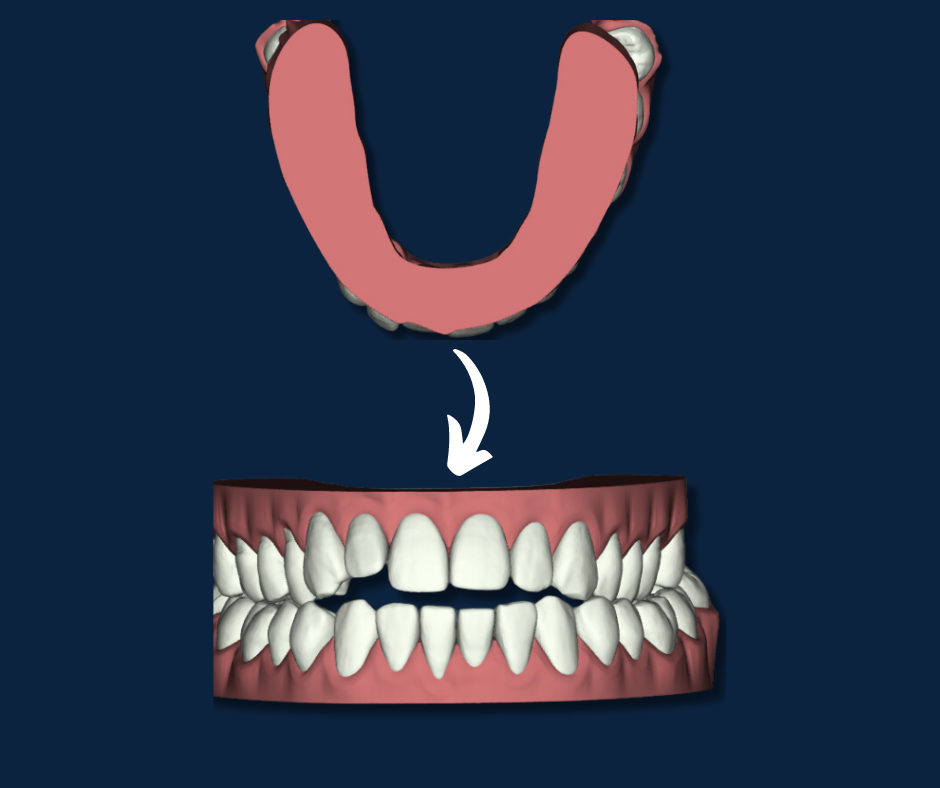
#
Breaking Changes
This release also includes some breaking changes:
#
smoothingFactor & decimationFactor
We removed the deprecated smoothingFactor and decimationFactor options, in favour of the smoothingIterations and decimateMaxError options. This is is because we are switching to a new smoothing and decimation algorithm, which provides better results, in a shorter amount of time (up to 8x speedup).
The more smoothing iterations, the smoother the mesh. We use a value of 0 for all “small structures” (teeth, nerves, sinuses, etc.), and 1 for all other structures. The decimate max error defines the maximum error, in mm, that will be tolerated when decimating the mesh; the higher this error, the smaller in size and the “rougher” the mesh. We used a value of 0.03 mm for all “small structures” (teeth, nerves, sinuses, etc.), and 0.1 mm for all other structures.
We fined-tuned these default values in order to obtain precise meshes, that are not too large in size, and visually pleasing, but we recommend you to play with these options and see what works best for you. The new defaults result in meshes that are on average 1/3 of the size compared to /v2, while keeping most of the accuracy.
#
makeManifold
We removed the makeManifold option. Meshes generated from the Engine are now in almost all cases manifold, but if you want to be 100% certain that a mesh is manifold, you will need to put smoothingIterations to 0.
#
Routes /implant-job, /cmf-job, /orthodontics-job , and /segmentation-job
These deprecated routes have been removed, please switch to the /job route, which contains the same functionality. We also encourage you to move away from /generic-job, as we are deprecating it (/job is a simple rename of this route, there aren't any functional changes).
Overall our goal will be to limit breaking changes to make the upgrades as easy as possible from your end, and to always deprecate features before removing them.
Other impactful changes of this release:
- The general
successstatus returned when the job is finished will now only befalseif the full job failed, not if certain output files failed. - We will be deprecating certain functionalities, which will then be removed in our next stable release; we thus advise you to already start switching. You can find these in the changelog, in the “Impactful changes” section. An important one is the deprecation of the
/generic-jobroute, in favour of the/jobroute (just a simple renaming, no change in functionality).
#
Release & Upgrade Process
In terms of release and upgrade process, we will aim to do a stable deployment of the Engine every 3 months, if there are sufficient improvements and new features. The deployment version name is defined by the year and month (YY.MM) of the deployment. Once a new stable deployment is released, you will have 6 months to migrate from the previous version; you will thus now have 6 months to switch from /v2 to /24.06. Once 6 months are passed, we will automatically redirect the traffic to the next version (e.g., /v2 will be redirected to /24.06 in December). Of course, we will inform you in due time, and will check-in with you to ensure that any disruptions are avoided; you can always reach out to us if you have any concerns.
To switch to this new version, you simply need to change the version number in your Engine URL, e.g., https://eu.virtualpatientengine.com/v2 → https://eu.virtualpatientengine.com/24.06 for the EU region.
We’re looking forward to hearing your thoughts on this new version, and remain available if you have any questions or encounter any issues 🚀.